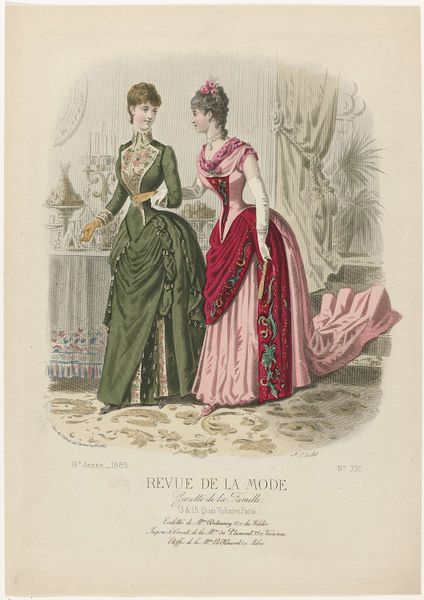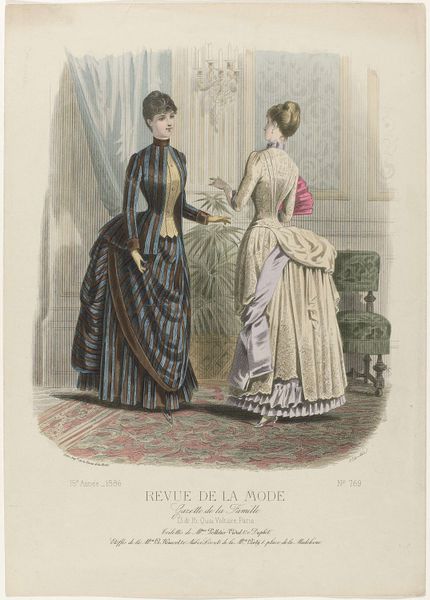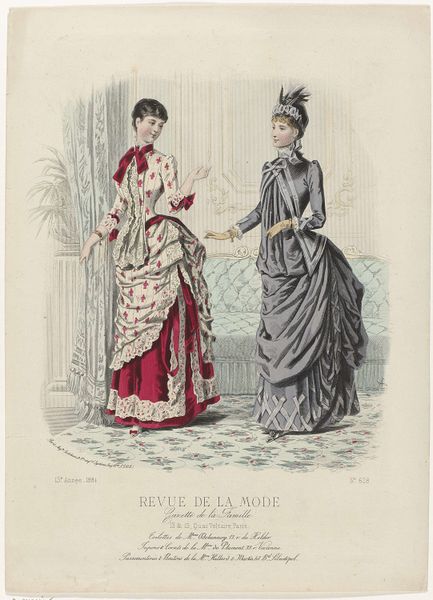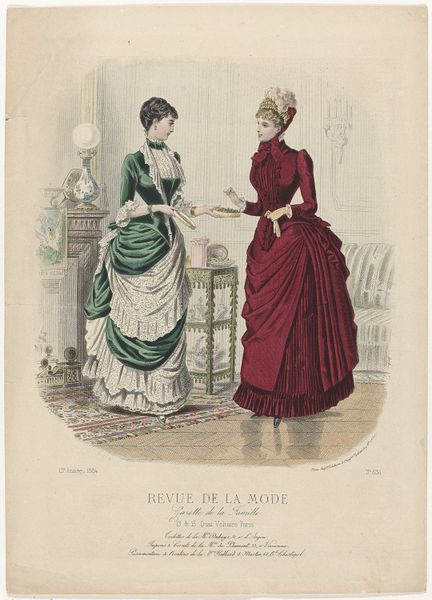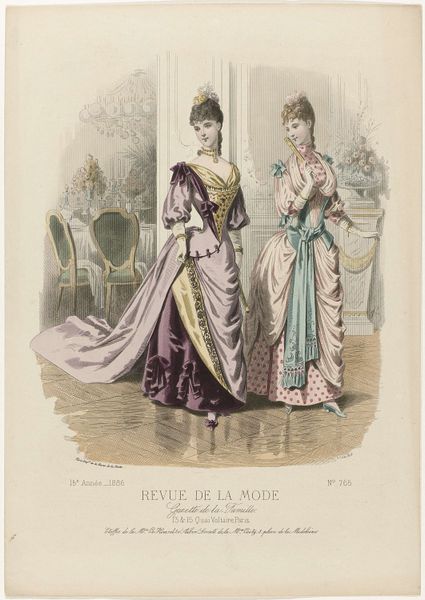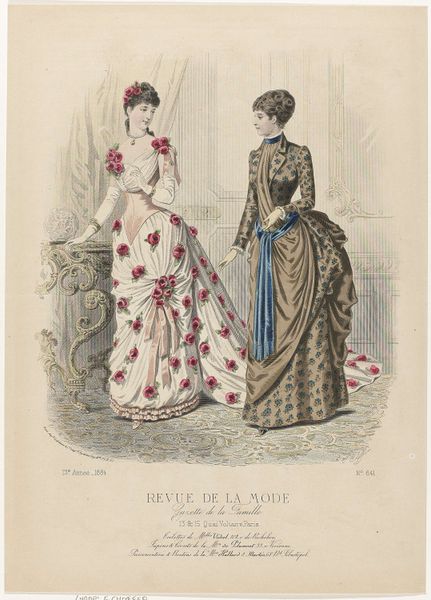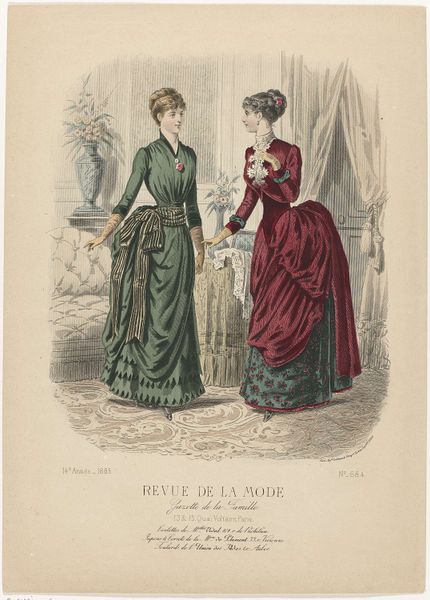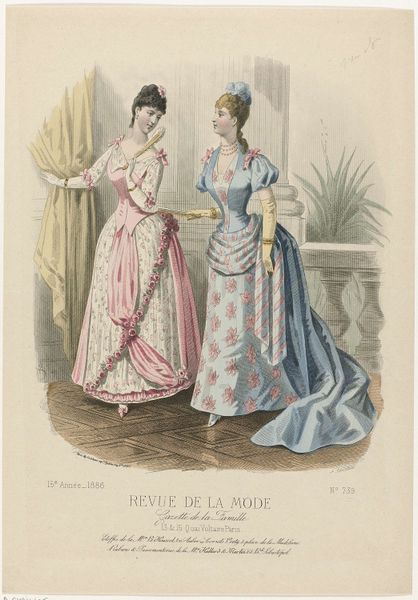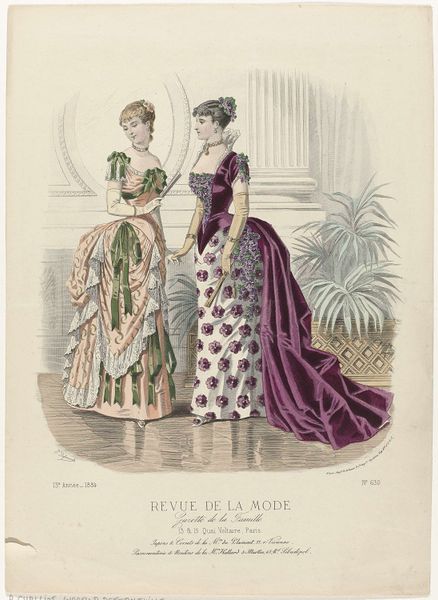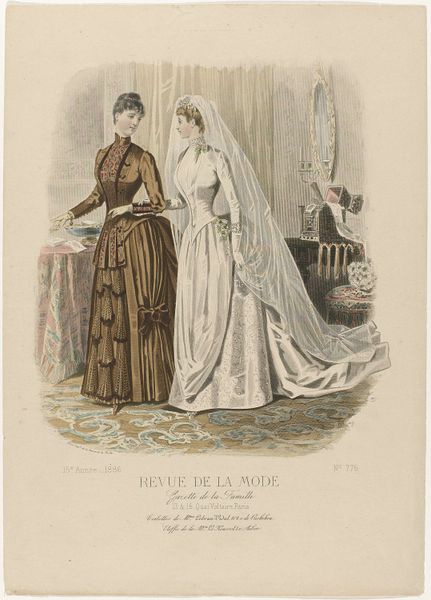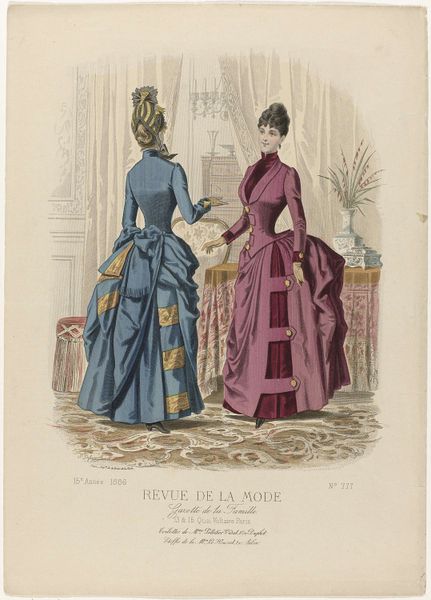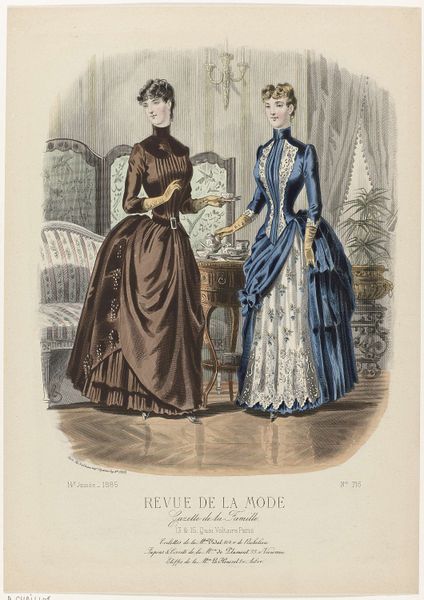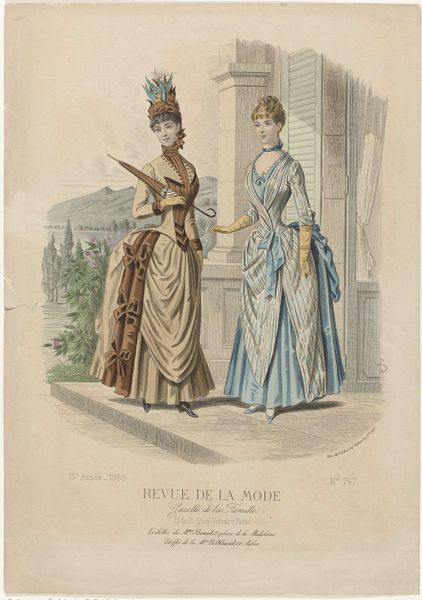
Revue de la Mode, Gazette de la Famille, dimanche 29 novembre 1885, 14e Année, No. 726: Toilettes de Mme Guillot (...) 1885
0:00
0:00
Dimensions: height 375 mm, width 268 mm
Copyright: Rijks Museum: Open Domain
Curator: Ah, yes, this is a print entitled "Revue de la Mode, Gazette de la Famille, dimanche 29 novembre 1885, 14e Année, No. 726: Toilettes de Mme Guillot," created by A. Chaillot in 1885. It seems to be an engraving with watercolor detailing. Editor: Wow, that's a mouthful! My first impression is that it feels almost dreamlike, with those soft pastel colors and intricate lace. It's like peering into a very fancy, very polite dream. Curator: The romanticism style certainly contributes to that dreamy effect. Prints like this, especially in fashion magazines, were key in shaping aspirations and reflecting societal values. The clothes here aren't just garments; they’re social signifiers. Editor: Absolutely. I'm curious about the lace. It looks so delicate and almost ephemeral, but also structurally so important to the design of the dresses. Like, is it about beauty or some crazy constraint on women’s movement at that time? Or is it both? Curator: A sharp question! Lace holds many layers of meaning. It represented luxury, status, and refinement, of course. But psychologically, it could also signify confinement, or perhaps a screen--literally or figuratively--between a woman and the world, which she had to navigate according to a highly prescribed social code. Editor: A screen, that’s really evocative. I imagine flipping through these images, yearning for this beautiful but inaccessible world… while simultaneously wanting to tear the lace and restrictive expectations away. There’s real tension there. Curator: The enduring power of images like this lies precisely in that tension. We can still access the visual language of desire, constraint, and aspiration woven into these textiles, lines, and poses. The visual rhetoric remains legible, if we are attentive. Editor: That’s fascinating! I was caught up in the visual candy, the gorgeous rendering. But knowing about all of that background kind of empowers me to really 'read' the print for what it signifies to me. Curator: Precisely. Visual symbols act as memory keys, allowing us to understand, critique, and reimagine our past, and maybe adjust our direction into the future. Editor: Exactly. Looking at this, I am reminded of all the historical and societal expectations pressing down on us and the ways we choose to navigate that even today.
Comments
No comments
Be the first to comment and join the conversation on the ultimate creative platform.
